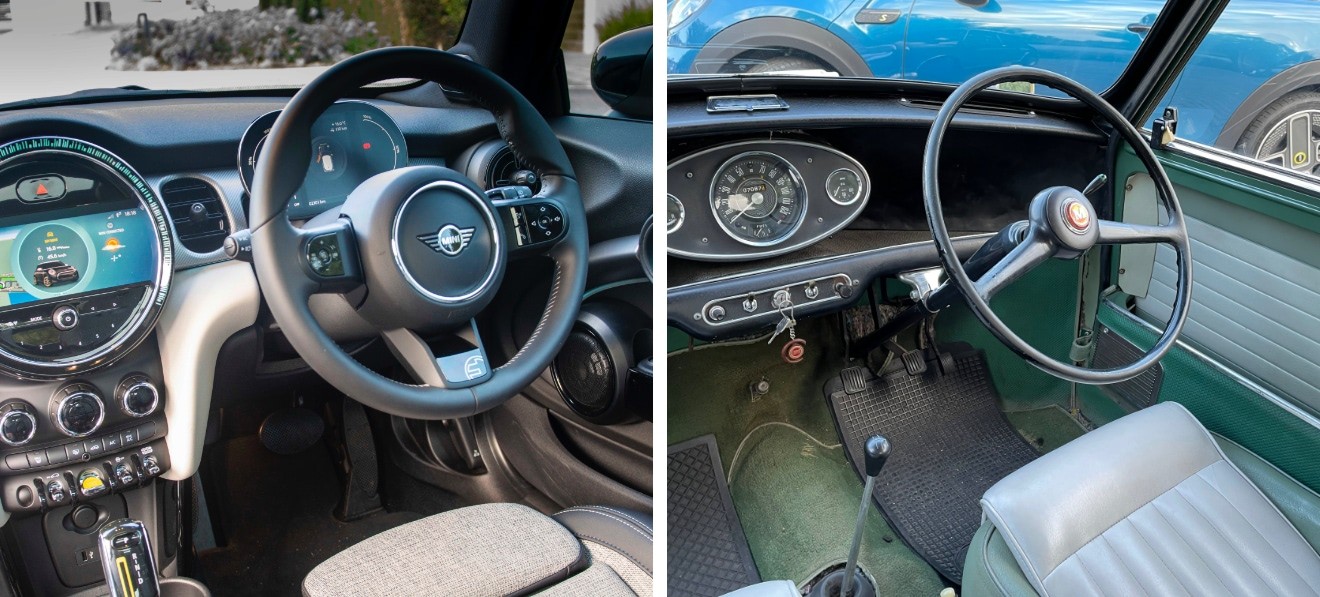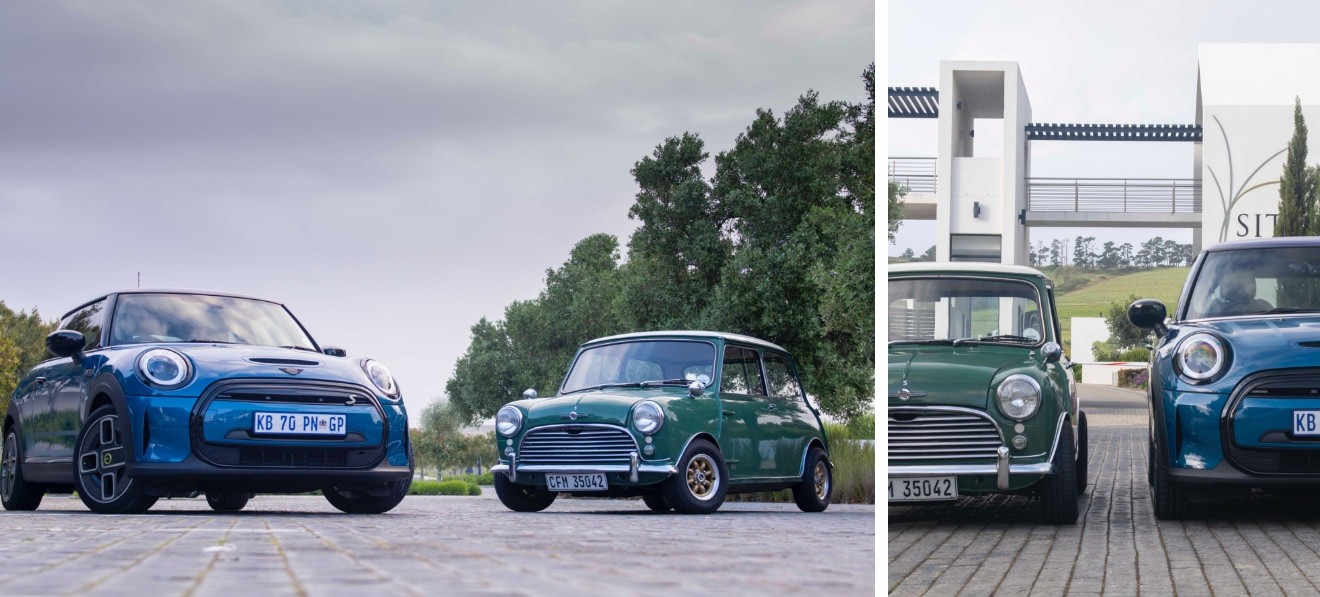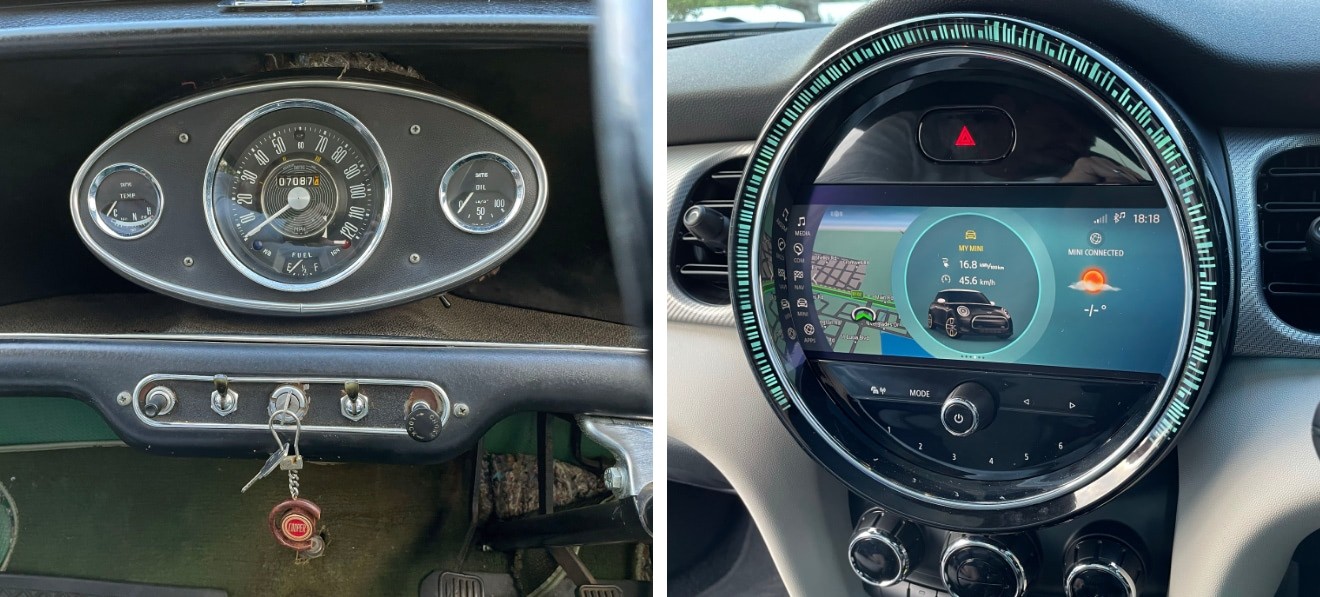Our tool for managing your permission to our use of cookies is temporarily offline. Therefore some functionality is missing.
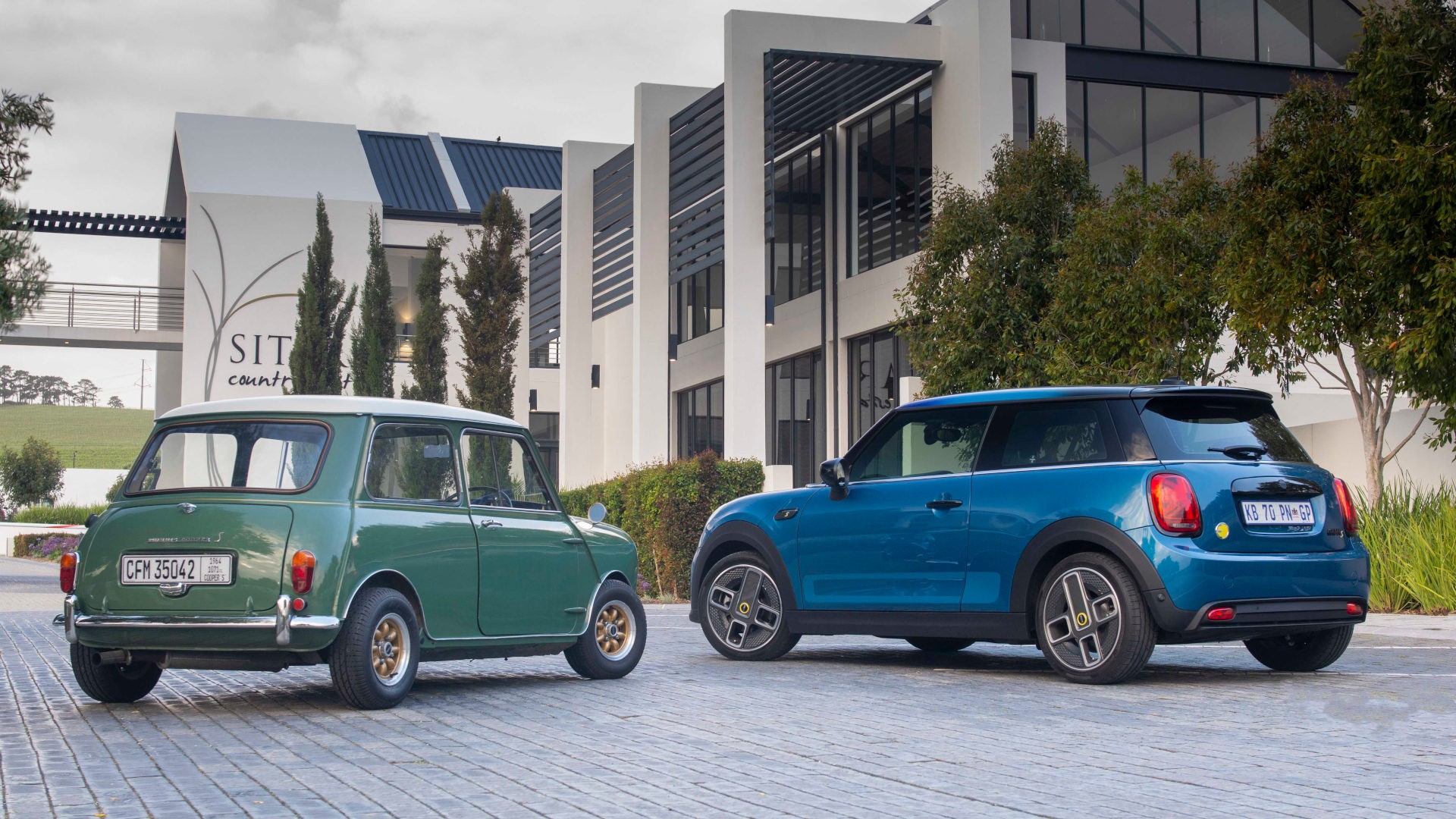
MINI SE MEETS AUSTIN COOPER S.
Motoring journalist and photographer Ian McLaren spent the day with two landmark MINIs – the new all-electric MINI SE and a rare 1964 Austin Cooper S – and found that, despite the obvious differences, old and new have some profound commonalities.
The current MINI package might still be one of the more compact hatchback offerings available, but when you see it alongside a classic MINI, you’re immediately aware that the iconic car’s footprint has grown substantially since Alex Issigonis’s ground-breaking original design first rolled off the Birmingham production line some 62 years ago.
Despite the difference in exterior dimensions, it’s also clear that the design of the new all-electric MINI SE that I have the opportunity to drive is still an ode to its forebear.
For the day, we decided to pair up the 2021 MINI SE with a very special diminutive member of its early family tree, an Almond Green 1964 Austin Cooper S. Gliding the newest interpretation of the MINI up to and alongside the rare classic, however, I can’t help thinking that those responsible for the original trend-setting concept may yet approve of the current evolution of their vision. With the all-new generation MINI scheduled to be unveiled towards the end of 2023 into 2024, perhaps the similarities between the first iteration and the future-focused, all-electric MINI run deeper than they appear on the surface.
Efficiency
The idea behind the original MINI was born of an unprecedented need to urgently conserve fuel reserves, especially in the wake of the Suez Crisis in the late 1950s, when fuel supplies to Western Europe were threatened. MINI stepped up to offer the broader buying public a mould-shattering form of personal transportation that was as efficient as it was easy to use.
The resulting design, with its packaging-conscious transverse-mounted engine, lightweight construction and wheel-at-each-corner layout made the final product a delight to drive and all but carved the MINI’s legacy into automotive history books – and a fair few fashion magazines.
Performance
Of course, it didn’t take long for the dynamic capability of the MINI package to be realised. The charge was led by experienced racer and automotive engineer John Cooper. Well known for his work on Formula racing cars, he discerned the race-winning potential in MINI’s pared-down package. Still broadly associated with every performance-focused model to leave a MINI showroom, the first time Cooper’s name appeared on a tailgate was when the limited-edition Austin Cooper S was launched in 1964.
AFTER SPENDING AN ENTHRALLING DAY WITH THESE TWO LANDMARK DERIVATIVES, WHAT’S CLEAR IS THAT SIX DECADES LATER, THE FUN-FILLED SPIRIT OF THE MINI BRAND REMAINS UNDENIABLY INTACT.
He introduced a modified, more powerful 1071cc engine, upgraded the brakes and re-envisioned an appropriately sportier interior. John Cooper’s relationship with the MINI brand was soon announced to a stunned racing fraternity via a slew of victories at the likes of the prestigious Monte Carlo rally, which the legendary little racer won three times on the trot.
One of the modifications made to the interior of the around 4 000 original Cooper S cars was a centrally mounted speedometer adjusted to reach 120mph (around 193kph), compared with the altogether more conservative figure associated with the first ’59 MINI.
Electric Dreams
Measuring 1.86cm tall and seated with my knees at angles long ago forsaken, with my hands clumsily grappling with the rim of an impossibly thin steering wheel, I can only marvel at the exuberance and, indeed, courage it must have taken to drive a car this size – fitted with 10-inch wheels – flat-out around a snow-covered mountain pass.
In its modern application, that iconic centrally mounted speedometer houses a crisp, latest-generation touchscreen infotainment display, capable of mirroring an owner’s smartphone screen. I had a chuckle at the inclusion of icons showing nearby petrol stations within this particular third-generation MINI’s satellite navigation system. In the 2021 MINI SE, it’s not a fuel station forecourt you’d require, but perhaps it just goes to show that MINI continues to be forward-looking and solution-orientated as sustainable mobility gains traction.
Unlike the BMW i3 with which the SE shares its running gear, the first all-electric MINI has power delivered to the front wheels. So compact is the technology and progressive are the plans around this model that its maker can assemble the car on the same production line as derivatives that still feature a traditional engine – the electric motor simply slotting in where the fuel-powered one might.
A downside associated with all contemporary electric cars is that battery packs are, for the time being, inherently heavy items. Despite the battery in the MINI being relatively small in terms of its operating capacity (32.6kWh) compared with what is currently being offered elsewhere in the broader family of BMW vehicles, this still sees the newer car in the images you see in this feature weighing around 700kg more than the original Cooper.
Despite this, MINI is proud to have achieved an optimal 50:50 distribution of this weight, front to rear. Together with the immediacy of the power delivery associated with an all-electric vehicle, as well as the sharp “go-kart-like” handling characteristics passionately preserved through more than 60 years’ worth of evolution, there remains a welcome sense of familiarity to the way the battery-powered MINI drives – both in a straight line and around corners.
A legend lives on
Dimensions aside, parked beside the Almond Green Austin, one wonders what those involved in the original project would make of the new car’s recently updated modern family grille, LED-infused head and tail lamps, multi-tone roof finish and quirky 17-inch “Power Spoke” alloy wheels. Indeed, would they believe that sited behind what appears to be a standard fuel tank flap there’s now a plug socket?
While no longer entering the market at entry level prices, as was the plan in 1959, the SE is currently the most affordable EV available in South Africa. Where optimal efficiency was the order of the day when it came to signing off the first car’s 848cc engine, now an emissions-free drivetrain runs exclusively on battery power.
Like the evolution of the mobile phone, in time we can expect the overall weight of battery packs used broadly in electric vehicles to fall as their range increases. In a package like the MINI, less weight means performance and handling characteristics will ever more closely mimic those of the all-conquering first-ever Cooper S.
After spending an enthralling day with these two landmark derivatives, what’s clear is that six decades later, the fun-filled spirit of the MINI brand remains undeniably intact.
JOHN COOPER’S MODIFIED MINI STUNNED THE RACING FRATERNITY WITH A HAT TRICK OF VICTORIES AT THE MONTE CARLO RALLY.

SEVENTH HEAVEN WITH A SILVER LINING

SEVENTH HEAVEN WITH A SILVER LINING
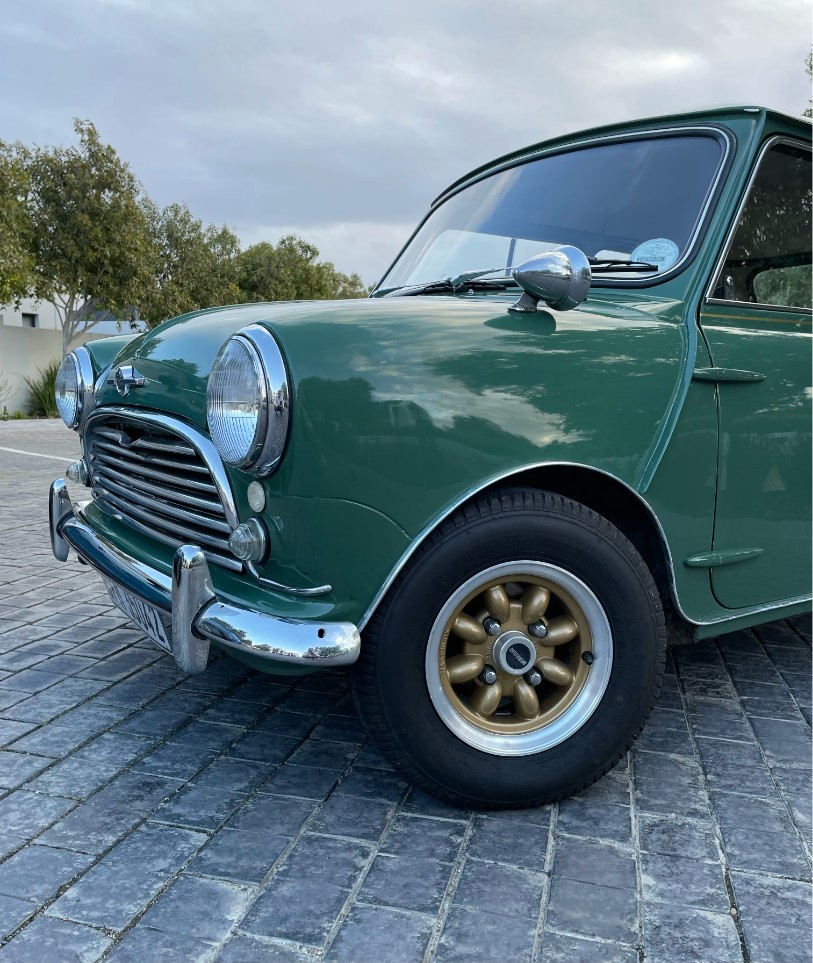
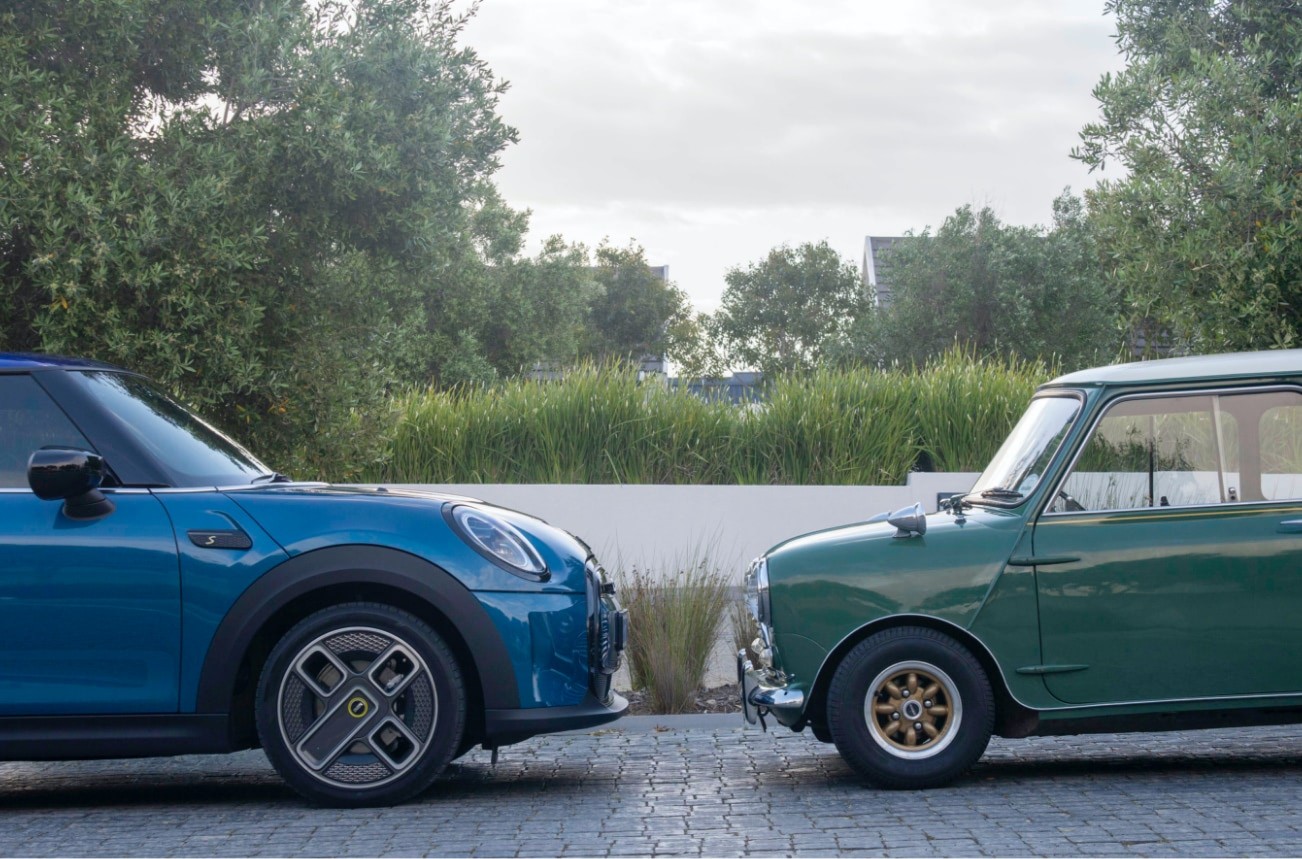
Text and images: Ian McLaren | Twitter and Instagram: @ianmclaren76
